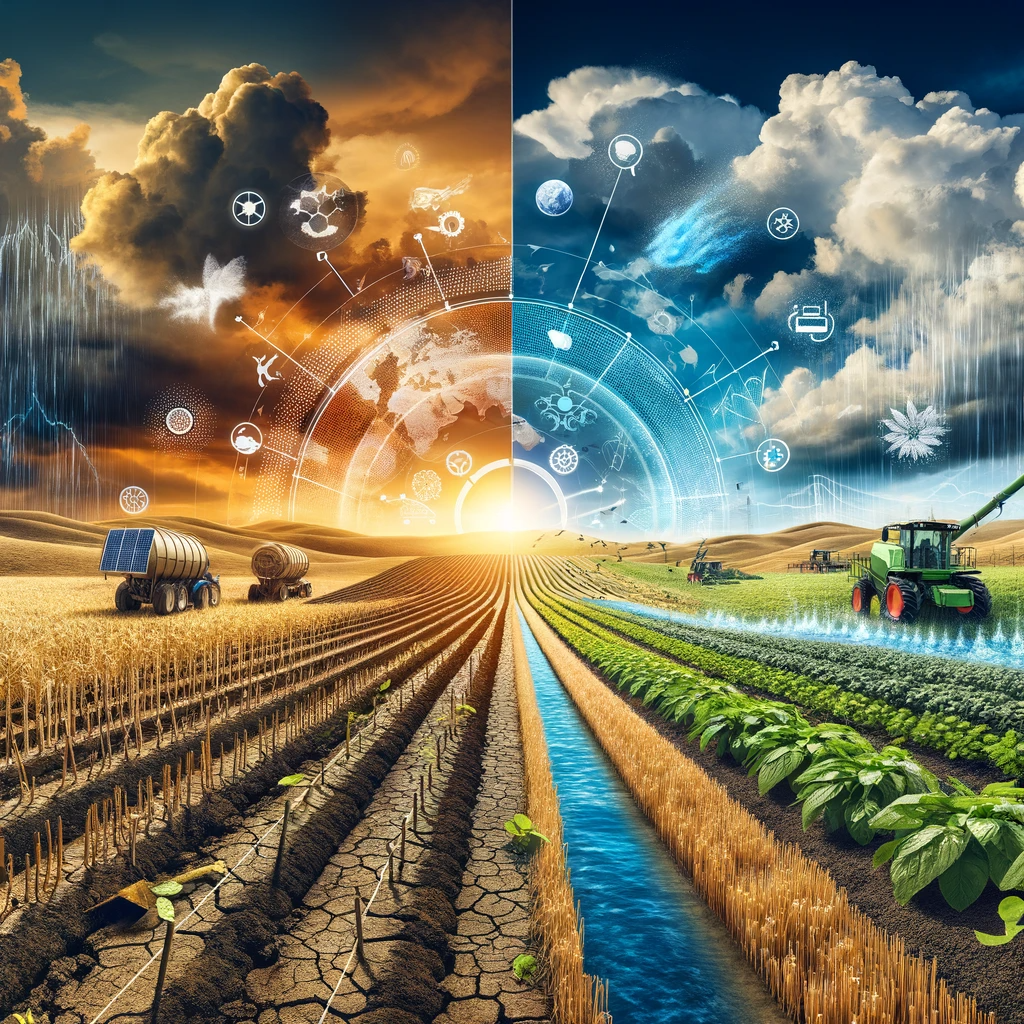Climate Snippet
Water investment is crucial for building climate-smart food systems. Innovative agricultural technologies and management strategies can help achieve net negative emissions by 2050. However, water scarcity poses a significant challenge, threatening the sustainability of food production. Policymakers must prioritize water management and investment to ensure a climate-resilient future. Financial mechanisms like Green Bonds and Blue Bonds play a pivotal role in financing climate action, emphasizing the importance of sustainable water management. Private finance alignment with climate action efforts is essential, as an estimated USD 3-6 trillion investment annually until 2050 is required. Water investment is not just an environmental issue but a path to sustainability for our food systems.
Climate Action
- Prioritize water management and investment to ensure a climate-resilient future
- Make targeted policy support and investment in managing and conserving water resources
- Explore the use of financial mechanisms like Green Bonds and Blue Bonds for funding climate action and water-related initiatives
- Align private finance with climate action efforts to support water investment in agriculture
Tackling Climate Change Through the Global Food System
In a world grappling with climate change, our global food system emerges as a crucial battlefield. According to recent research led by Cornell University’s Benjamin Z. Houlton and Princeton University’s Maya Almaraz, published in Nature, this system could pivot from being a significant greenhouse gas emitter to achieving net negative emissions by 2050. Their study underscores the potential of innovative agricultural technologies and management strategies, such as soil modifications, agroforestry, sustainable seafood harvesting, and hydrogen-powered fertilizer production. These approaches can convert the food system into a robust tool against climate change.
The U.S. Food System’s Role and Challenges
In the United States, initiatives like Colorado State University’s AgNext program are at the forefront of understanding and reducing emissions, particularly methane from cattle. These efforts are vital, considering the ambitious goal of cutting agricultural methane emissions by 30% globally by 2030. However, a significant challenge looms over these initiatives: water scarcity.
Water Scarcity: The Achilles Heel of Food Systems
The New York Times highlights a critical concern: America is rapidly depleting its groundwater resources, crucial for agriculture. This situation is exacerbated by the broader impacts of climate change on the water cycle, as detailed in the Fifth National Climate Assessment. This comprehensive report reveals how climate change intensifies rainfall, floods, droughts, and shifts weather patterns, critically affecting freshwater supplies and quality across the United States. Moreover, changes in the water cycle, including rising sea levels, reduced snowpacks, and declining groundwater, pose imminent threats to communities and ecosystems.

Key Findings from the Fifth National Climate Assessment
Water Cycle Changes and Community Impact
- Heavier rainfall and droughts lead to increasing flood damage and water quality impacts.
- Frontline communities, including Black, Hispanic, Tribal, Indigenous, and socioeconomically disadvantaged communities, face disproportionate risks due to limited access to resources and infrastructure.
Progress and Challenges in Adaptation
- While water managers have improved adaptation efforts, challenges persist in infrastructure standards and water allocation institutions.
- The lack of resources for effective adaptation and underrepresentation in decision-making exacerbate the vulnerabilities of Frontline, Tribal, and Indigenous communities.
Policymaker’s Role in Water Investment
The solution to this impending crisis lies in targeted policy support and investment. The Climate Bonds Initiative identifies critical policies necessary for transitioning to a low-carbon economy, including investment in renewable energy and sustainable land use. These policies must extend to managing and conserving water resources, crucial for both agriculture and climate mitigation.
Financing Climate Action through Innovative Bonds
Financial mechanisms like Green Bonds and Blue Bonds, as per the International Finance Corporation, play a pivotal role in addressing environmental and climate challenges. While Green Bonds fund environmentally beneficial projects, Blue Bonds are specifically tailored for water-related initiatives. The burgeoning interest in these bonds underlines the growing recognition of the importance of sustainable water management in climate action. Additionally, the World Bank Group and the IFC’s commitment to stringent ESG standards and sustainability frameworks in their funding programs is a testament to the seriousness of this challenge.
The Urgent Need for Investment
To achieve a climate-resilient future, an estimated USD 3-6 trillion investment is required annually until 2050. This enormous sum underlines the need for private finance to align with climate action efforts. While technical difficulties prevent a deeper dive into the current state of these financing markets, it’s clear that a significant financial commitment is necessary to support water investment in agriculture.
Conclusion: Water Investment as a Path to Sustainability
In conclusion, water investment is not just an environmental issue but a crucial component of a climate-smart food system. The transition to sustainable practices in agriculture, supported by targeted policies and innovative financing, can turn the tide against climate change. It’s a call to action for policymakers, financial institutions, and the agriculture sector to prioritize water management and investment, ensuring a sustainable and climate-resilient future for our food systems.
References
- “Global food system could help achieve net negative emissions by 2050” – A study by Benjamin Z. Houlton and Maya Almaraz on the role of the global food system in climate change mitigation. Phys.org.
- “Measuring methane emissions from cattle: CSU experts explain its importance” – Research by Colorado State University’s AgNext program on reducing methane emissions from cattle. source.colostate.edu.
- “America Is Using Up Its Groundwater Like There’s No Tomorrow” – An article discussing the critical issue of groundwater depletion in America and its implications on agriculture. WaterWatch.
- “12 Policies to Unlock Deep Decarbonisation” – Climate Bonds Initiative report on policies for transitioning to a low-carbon economy. Climate Bonds Initiative.
- “Green Bonds | International Finance Corporation (IFC)” – Information about the role of Green Bonds in climate finance as issued by the International Finance Corporation. IFC.
- “Fifth National Climate Assessment” – A comprehensive document highlighting the impact of climate change on water resources, energy systems, land use, and forests in the United States. Fifth National Climate Assessment.



